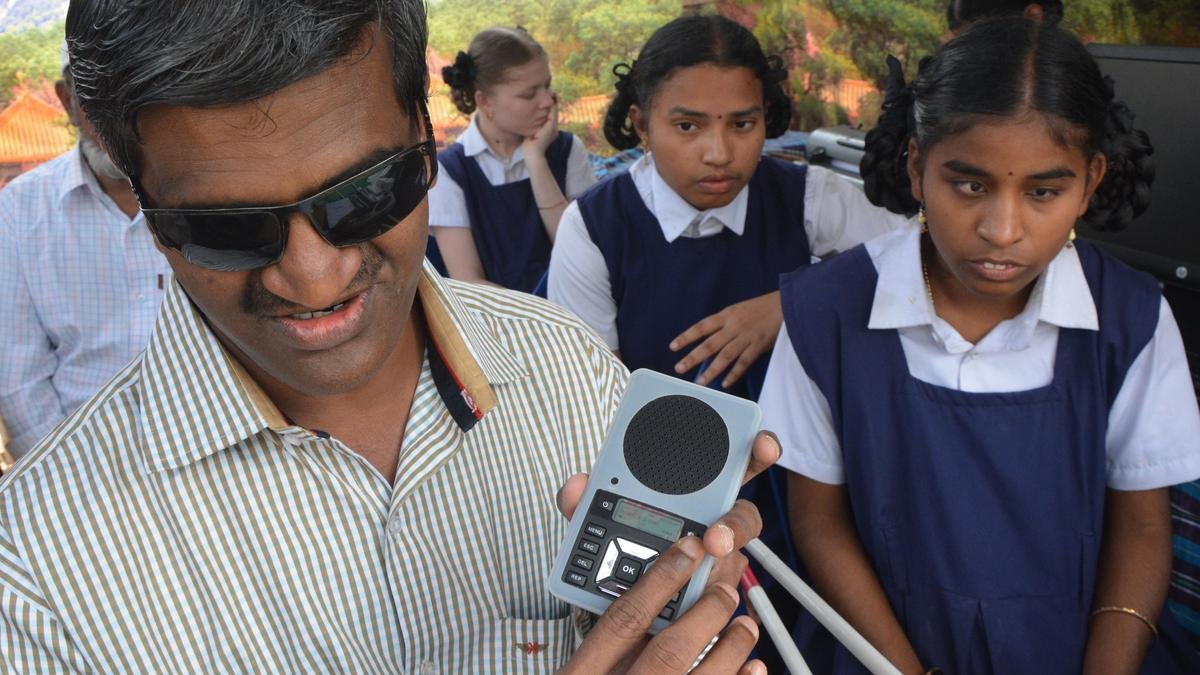Lack of accessible ebooks poses hurdles for persons with visual impairment

A visually challenged person explaining the features of a talking digital pocket daisy player, ebook reader. File photo
| Photo Credit: C.V. Subrahmanyam
With the board exams round the corner, a dearth of accessible ebooks, including textbooks, has left visually impaired students in the lurch.
For a visually impaired person to be able to access a book, there are multiple processes to go through. First, they buy the book, then scan the pages, and then feed it through an Optical Character Recognition (OCR) software tool, which is a technology that converts it to a machine-readable language file. The file then undergoes a proofreading process by a non-visually impaired person, before it is accessible.
“To get a book in our hands is very difficult. The conversion of books into accessible formats is a huge challenge. Even OCR only does about 90% of the work, the other 10% has to be done by a human being to ensure the grammar is correct. There are various independent groups that do this; however, it is not done at the source level itself,” says P. Chinnakaruppusamy, an accessibility tester for an IT company.
Font conversion issues
The problem only increases when it comes to languages such as Tamil that have their own script as they come under stylised fonts, whereas other common fonts such as Ariel come under unicode fonts.
“The OCR technology cannot read the Tamil stylised font, which means an accurate conversion can’t be made. Only 50-70% of it can be converted and even then, it would have to be proofread thoroughly to ensure that the book is converted correctly. This issue could be resolved if the books were printed and scanned in unicode fonts,” he added.
Hemavathi Jayaram, Chennai resident and mother of a visually impaired student,had to convert all the textbooks into ebooks for her son after purchase. Even though most textbooks are available in PDF format, they are still inaccessible, as after scanning, they are available as images and not text. “None of the textbooks are available in epub format. While Braille books are helpful, they are not easy to use as one book will appear in several volumes in Braille, which makes it laborious and time-consuming for students, apart from being a financial stress factor,” she noted.
Stating that access and accessibility should be for all, Raghuraman Kalyanraman, assistant professor, Government Arts College, Nandanam, said that it is important that ebooks are also affordable. “This is not a charity or a service, but a right of citizens and the duty of the government to ensure that books are made for everyone. This is especially important for disabled students,” he said.
Published – February 08, 2025 02:35 pm IST



Post Comment